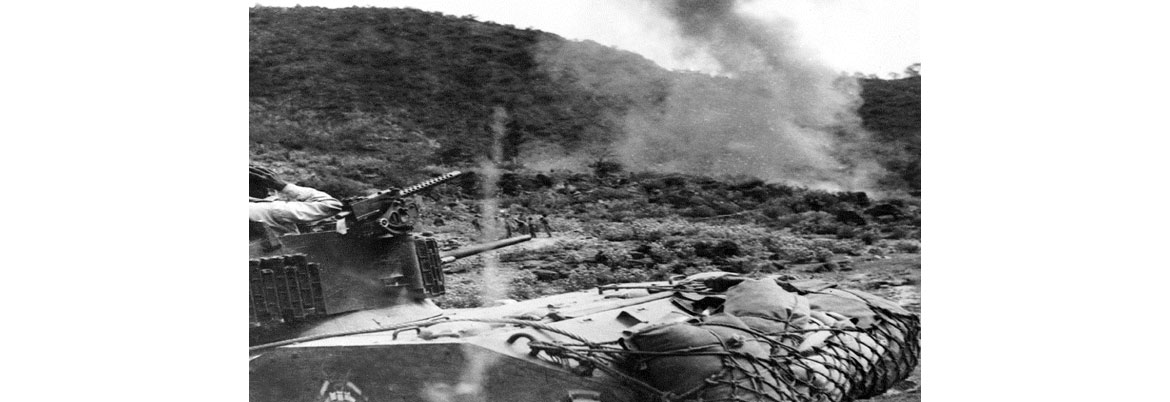The Story of Jammu and Kashmir Part 2 - Why we lost, what we lost
- In History & Culture
- 01:37 AM, Jul 30, 2015
- Suresh Kochattil
When we talk about Jammu and Kashmir, it is said that the map we see is not the one that we have. The Government of India has often banned magazines, filed cases against TV channels for projecting the true map of what exists on ground today. But the stories of the sheer bravery of soldiers who tried to defend Jammu and Kashmir from Pakistani invaders are hardly known amongst our countrymen.
It took me a lot of reading and research of military journals and battle reports to understand what really happened in Jammu and Kashmir in the days that followed the British granting Independence to India and Pakistan. Not all of what had been written in dispatches and records can be believed. There are multiple narratives about what really transpired in those days and months. Pakistan played a devious game then in Jammu and Kashmir and it continues to do so today.
The chaos started with declaration of independence on August 15, 1947 and the events that followed. With the massacre of innocents and the biggest re-location of refugees taking up his attention, Prime Minister Jawaharlal Nehru literally took his eyes off the ball, in cricketing parlance. As Punjab remained in a state a flux, the new Indian government had no idea what to do with State of Jammu and Kashmir and Hyderabad. This then was the largest of the Princely States, but unlike Hyderabad and Junagadh, the criticality of Jammu and Kashmir was never in question.
With over four million people, largely Muslim in Kashmir, the Hindus’ predomination was in the Jammu region, Ladakh had a Buddhist concentration. The State had four provinces at that point in time: Jammu, Srinagar, Ladakh and Gilgit, each with a Governor. The province of Gilgit was on a 60 year lease by the Government of India being now handed back to the Maharaja of Jammu and Kashmir once Independence became a reality.
In accordance with the constitution, the rulers of the princely states had two options – either to join India or Pakistan, but they did not have a third choice - to remain independent. The Maharaja of Jammu and Kashmir decided to play a waiting game on the question of accession and instead, he offered a Standstill Agreement on 12 August, 1947 which was signed by Pakistan and not India. This was almost the same game that was being played out by the Nizam of Hyderabad, down south in the Deccan.
It is said that the British were smarting the insult that Maharaja Hari Singh had heaped on them by refusing to play ball at the 1930 Round Table Conference. The Pakistan Army led by their British Commander-in-Chief General Sir Frank Messervy, decided to invade Jammu and Kashmir with Lashkars consisting of 1,000 tribesmen. They were well equipped with arms, ammunition and essential clothing. The day for the operation was 22 October 1947, being codenamed ‘Operation Gulmarg’.
One town fell after another and within few weeks, Baramula, Jhangar, Naushera were lost to the marauding mob, Poonch was besieged and soon the Lashkars were at the outskirts of Srinagar. The irony was not lost on both sides, that both the sides were led by British officers. The way the British decimated Jammu and Kashmir was exemplified by one Major Brown, who was sent to disband the 6 Jammu and Kashmir Infantry, which was stationed in the Gilgit area. The next target was the Sikh troops at Bunji. The Sikh post at Janglot was attacked at night, with the entire garrison wiped out, except for a lone survivor who managed to escape. The Sikh company at Bunji decided to disband but here again the Gilgit Scouts under Captain Matheson captured them all. The entire area of Gilgit thus passed into the hands of Pakistan. But the real battle was fought by a brave military leader in Skardu, which was key to Pakistan’s plans and the British officers were ready to help Jinnah and the religious fanatics.
Skardu was the Tehsil headquarters in the district of Ladakh, and was ruled by the Jagirs of the Raja of Rondhu, Khapalu, Shiger, Kharmang and Skardu. These Rajas held their sway even when Dogras were ruling Kashmir and commanded respect and influence over their populace who were entirely Muslim.
With Gilgit and Bunji now run over by the British officers and tribal Lashkars, the mantle of 6 Jammu and Kashmir Infantry, now fell on the shoulders of Major Sher Jung Thapa. At Leh, was a company of Sikhs, less one platoon, under the command of Thapa. The orders from Srinagar were simple – we are in trouble here so you do what you can. Thapa was then asked to move to Skardu with as many troops he could muster from Leh and Kargil.
Born on 18 June, 1908 at Abbotabad in what is now Pakistan, he was the third generation soldier and a hockey buff, he was spotted during a game by a fellow British officer, and as they say - the rest is history. In September 1932 he earned a commission into the Jammu and Kashmir State Forces and became some sort of an expert in wireless technology.
Once the orders came from Srinagar, Thapa cobbled up a small force from Leh and Kargil include the only wireless set and reached Skardu on 3 December. As he and his men waited for the enemy, Thapa took stock of his ‘army’. Though he had a total of four platoons to start with on two flanks, individual ego clashes among the men ensured that Thapa had just 40 Sikh and 21 Muslim troops. He realized that unless he got immediate help from Srinagar, he and his men would be routed. He kept sending repeated appeals for reinforcements, as garrison now had just 130 non-Muslim and 31 Muslim troops. The problem was that there was no enemy in sight, or at least that is what Thapa and his men assumed - and they were wrong.
The Story of Jammu and Kashmir (Part 1):- https://www.myind.net/story-jammu-and-kashmir-part-1
By Suresh Kochattil







Comments